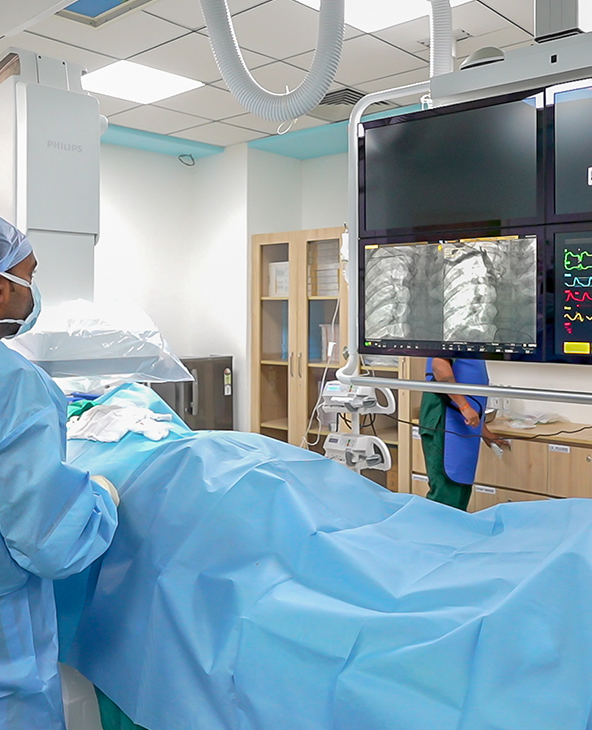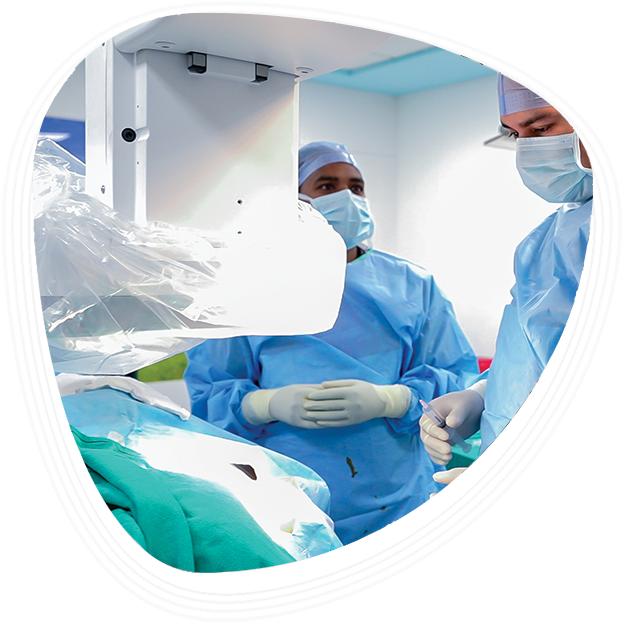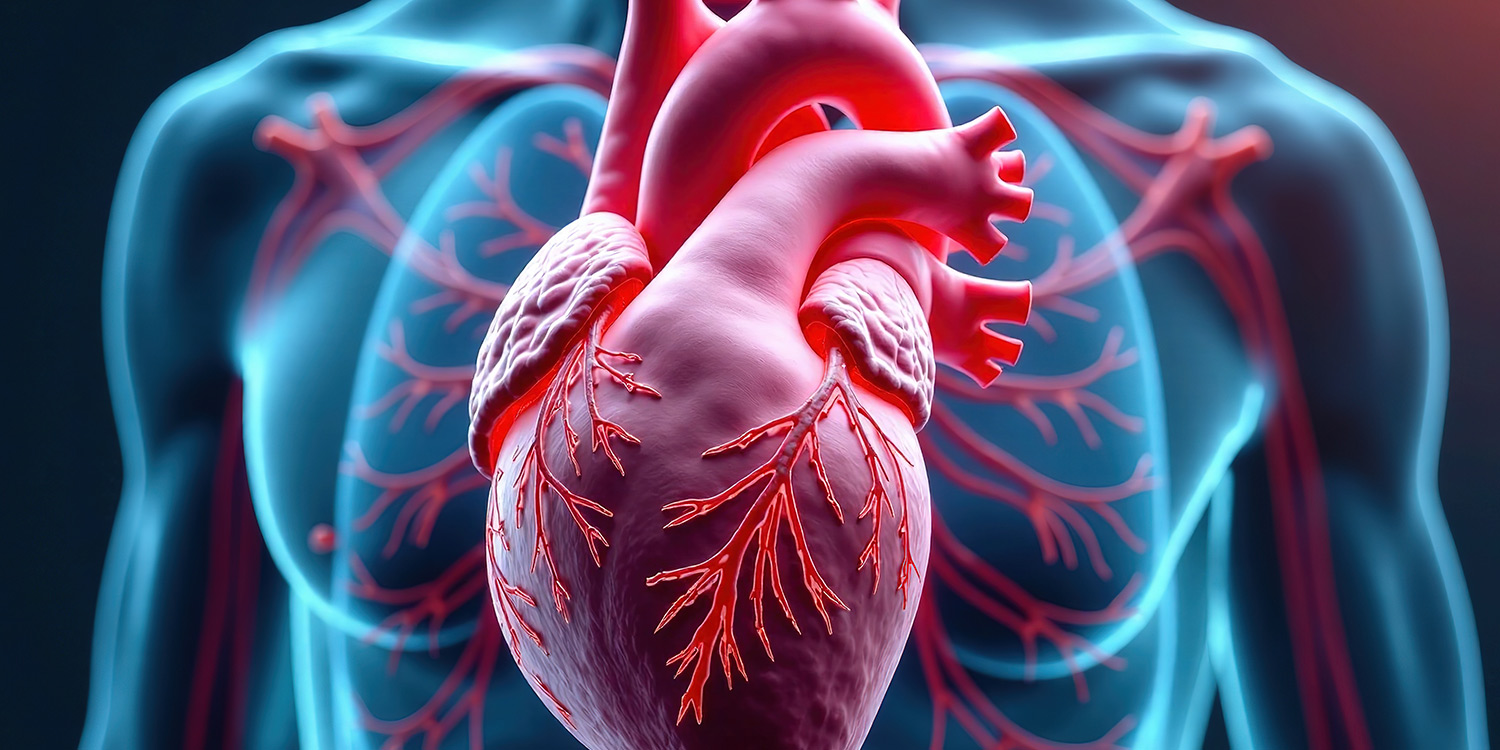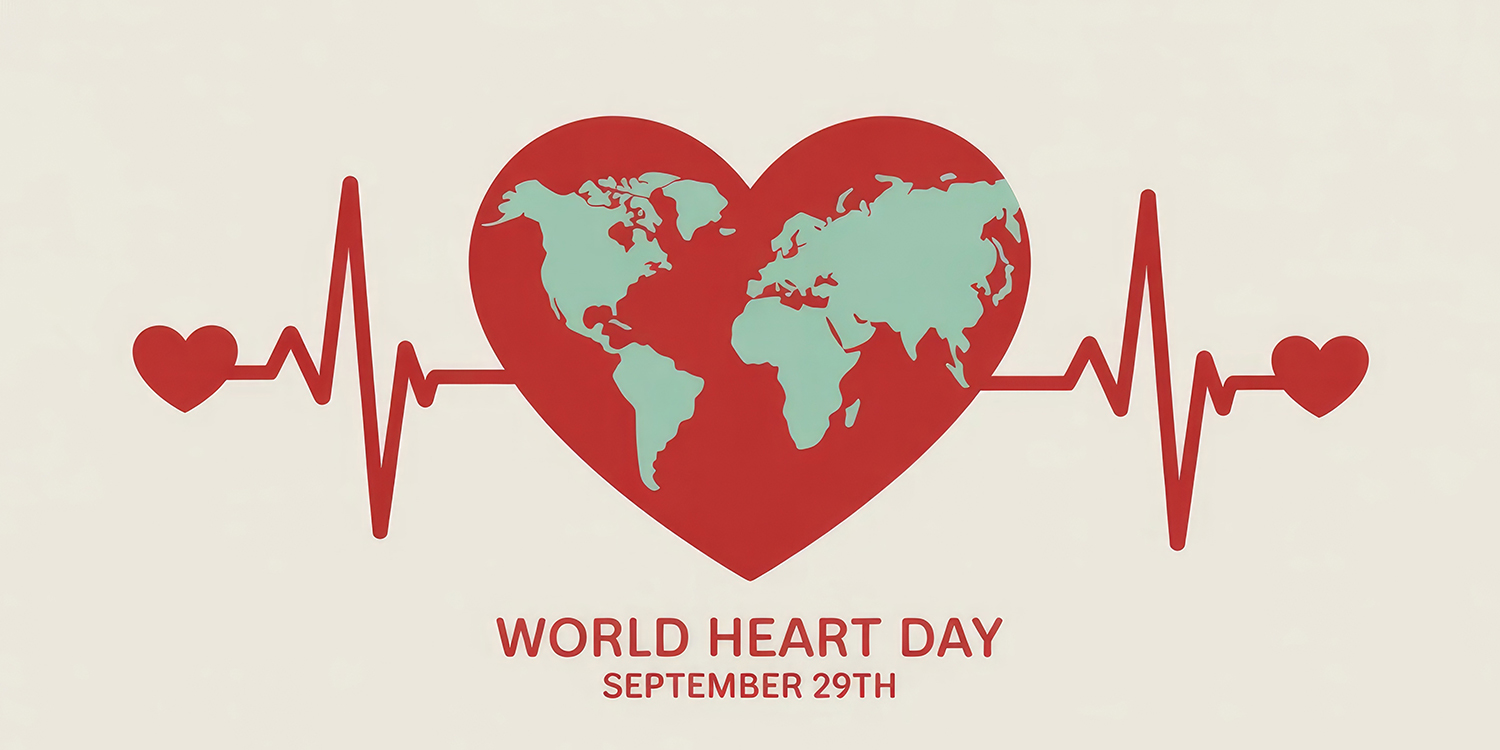Pacemaker implantation is a life-saving cardiac procedure aimed to regulate abnormal heart rhythms and improve overall heart function. For those in need of pacemaker implantation, Graphic Era Hospital offers a number of advanced options, including conventional, physiological, and leadless options. Our experienced electrophysiologists use cutting-edge technology and minimally-invasive methods to ensure safe and effective outcomes. From initial diagnosis to long-term follow-up, we provide comprehensive care for patients with rhythm disturbances, helping them return to active, healthier lives.

When is Pacemaker Implantation Recommended?
Common signs and conditions that may require pacemaker implantation include:
- Frequent fainting or unexplained dizziness
- Persistent fatigue or weakness
- Slow or irregular heartbeat (bradycardia)
- Heart block or conduction abnormalities
- Sinus node dysfunction
- Pauses or gaps in the heartbeat
- Palpitations with loss of consciousness
- Worsening heart failure symptoms
- Low blood pressure during exertion
- Abnormal findings on ECG or Holter monitoring
Schedule Your Appointment with
Our Expert Doctors
We are dedicated to driving lasting, positive transformation in healthcare management through innovation and patient-centered solutions.
Things to Know Before Pacemaker Implantation
Before undergoing pacemaker implantation, patients should be aware of key considerations related to preparation, procedure planning, and post-procedure expectations.
Important points to keep in mind:
- Choice of pacemaker depends on the heart condition (single, dual, CRT, or leadless)
- A detailed cardiac evaluation is required before the procedure
- Procedure is typically performed under local anaesthesia
- Minimal hospital stay, often within 24–48 hours
- Possibility of mild discomfort at the implantation site
- Follow-up is essential for device checks and programming
- Battery life ranges between 8–15 years, depending on usage
- Certain electronic devices may need to be avoided
- Temporary physical restrictions after implantation
- Health insurance may cover the cost based on policy terms
Pacemaker Implantation Procedure at Graphic Era Hospital
Pacemaker implantation is a safe and routinely performed procedure carried out by experienced electrophysiologists at our state-of-the-art cardiac facility. It involves placing a small device to help manage irregular heart rhythms.
What the procedure typically involves:
- Pre-procedure assessment: A thorough evaluation including ECG, echocardiography, blood tests, and rhythm monitoring.
- Anaesthesia and preparation: Local anaesthesia is administered with mild sedation if required. The chest area is cleaned and prepared.
- Lead insertion: One or more leads (wires) are guided through a vein into the heart using imaging for precision.
- Device placement: The pacemaker generator is implanted under the skin, usually below the collarbone.
- Testing and programming: The device is tested for accurate pacing, and initial settings are programmed based on patient needs.
- Wound closure: The incision is closed using sutures or surgical adhesive.
- Post-procedure care: Patients are monitored in the CCU or recovery unit, and discharged after observation with recovery instructions.
- Follow-up planning: A follow-up schedule is arranged for device checks, programming adjustments, and long-term care.
Why Choose Graphic Era Hospital for Pacemaker Implantation?

Cardiology Services Supporting Pacemaker Implantation
At Graphic Era Hospital, pacemaker care is supported by a full spectrum of cardiac services that ensure accurate diagnosis, expert implantation, and long-term follow-up.
Arrhythmia & Electrophysiology Services
- Comprehensive diagnosis and treatment for heart rhythm disorders
- Pacemaker, AICD, and CRT implantation services
- Advanced options including leadless pacemakers and physiological pacing (left bundle branch pacing)
- Personalised programming and monitoring of implanted devices
Non-Invasive Cardiac Testing
- ECG and Holter monitoring to detect arrhythmias
- Echocardiography (ECHO) for structural and functional assessment
- Treadmill Test (TMT) and Head-Up Tilt Test (HUTT) for evaluating exercise tolerance and syncope
- Cardiac imaging to plan device implantation with accuracy
Cardiac Rehabilitation & Follow-Up
- Supervised recovery plans after pacemaker placement
- Counselling on lifestyle adjustments and medication adherence
- Regular device checks and reprogramming to ensure optimal performance
- Physical activity planning and return-to-work guidance
Critical Cardiac Care Support
- Dedicated Cardiac Critical Care Unit (CCU) for post-implantation monitoring
- 24/7 emergency care for cardiac rhythm disturbances
- Life support systems including IABP and advanced cardiac monitors
- Safe environment for managing high-risk patients and complications
Procedures
- Pacemaker Implantation
- Cardiac Resynchronisation Therapy (CRT)
- AICD (Automatic Implantable Cardioverter Defibrillator)
- Coronary Angiography and Stenting
- TAVR (Transcatheter Aortic Valve Replacement)
Patient Stories
Blog
Frequently Asked Questions (FAQs)
How soon can one resume normal activities after pacemaker implantation?
Most patients can return to light activities within a few days. Strenuous arm movements or heavy lifting should be avoided for a few weeks as advised by the doctor.
Will the pacemaker be affected by electronic devices at home?
Everyday household electronics like microwaves, phones, and televisions are generally safe. However, strong magnetic fields and industrial equipment should be avoided.
How is the pacemaker monitored after implantation?
The device is checked during regular follow-up visits using a programmer that assesses battery life and lead function. Remote monitoring may also be available.
Does pacemaker implantation leave a visible scar?
Yes, a small scar may be present near the collarbone where the device is implanted. It usually fades over time and is not highly noticeable.
Can a pacemaker completely cure a heart rhythm disorder?
A pacemaker doesn’t cure the condition but effectively manages the symptoms by regulating the heart rate, significantly improving quality of life.











